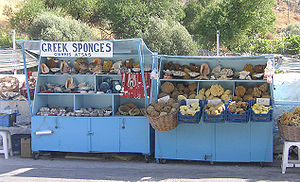(How the gift of a jigsaw puzzle made me recognise interesting truths about writing and the subconscious mind)

When my 10 year old daughter presented me with a jigsaw puzzle on Christmas Day, I knew it was just what I needed to take me out of myself and away from my keyboard for a much-needed mental rest.
She was surprised that I hadn’t guessed what her gift was after her not-so-subtle question on Christmas Eve:
“What’s your favourite number of pieces for there to be in a jigsaw puzzle?”
Fortunately my answer matched the puzzle that she’d bought: 1,000 pieces. What’s more, the picture was the kind I like best in a jigsaw puzzle: an array of small pictures combined together.
I couldn’t wait to get started on it. I seldom take time out to piece a jigsaw together, but every time I do, I get a frisson of pleasure from the reminder offered by jigsaw puzzles of the workings of the subconscious mind.
Subconscious Solutions for Jigsaw Puzzles

I love the way that you can pick up a piece and slot it immediately into place without thinking. You find your hand has already placed the piece in its correct position before you’ve made a logical appraisal of where it might fit. Only afterwards does your conscious mind catch up, realising, for example, that the slender grass stalk down one side of the piece lines up perfectly with its tip on the piece above. It’s as if some jigsaw-loving higher power is using your hand as its vehicle.
As I was slowly piecing my new puzzle together, it occurred to me that assembling a jigsaw is a lot like writing a book.
- No matter how carefully you prepare the component parts – the corners, the edges, all the pieces with blue sky or Persian carpet or Delft tiles or pink flowers – the assembly of the puzzle never goes entirely according to plan.
- When daunted by what seems like an insurmountably difficult section, you realise that if you only apply yourself, one piece at a time, you really can conquer the challenge.
- Sometimes it works best if you switch your conscious mind off for a bit and let the subconscious take over.
So it is with writing a book.
Different Approaches to the Jigsaw Puzzle
Not everyone tackles a jigsaw puzzle the same way, any more than authors follow the same formula for writing books:
- When I do a puzzle, I like to keep the box in view, so that I can study the picture and monitor my progress. Every time I look at it, I spot new and helpful details.
- My husband prefers the “mystery tour” approach, turning the box face down to create a harder challenge. He’d be the sort or writer who prefers not to start with an outline, letting the characters lead the way.
- Our daughter goes for her favourite parts first, e.g. the big pig in my Christmas present puzzle. She’s named him Steve and put a note in the box so we remember to greet him by the right name in future.

But it may be only writers (or crazy people) who like to anthropomorphise the pieces. As I’m assembling the puzzle, I like to classify the different shapes into characters (clockwise, from top left):
- the chubby, confident man, with outstretched arms extended for a hug
- the synchronised swimmers looking up
- the ballroom dancer
- the tractor driver
- the ballet dancer, leaping across the stage
- the air-traffic controller, waving a big lollipop to guide pilots around the runway

Although my more sensible scientifically-minded husband may not make making friends with puzzle’s component parts, he does enjoy as much as I do any jigsaw containing “whimsies”. Whimsies are the fancy-shaped pieces dreamed up by the Victorians to resemble specific shapes.
Our near neighbour, the Wentworth Wooden Puzzles company, is famous for its modern whimsies. It riddles its puzzles with pieces in the fancy shapes on specific themes. After completing my Christmas puzzle, we did a Wentworth one with an Alice in Wonderland theme. Camouflaged within the puzzle were an Alice, a Cheshire cat, a white rabbit, and all kinds of other characters from the classic children’s story. The need to accommodate these fancy shapes ensures the rest of the puzzle pieces also take unusual forms. Sometimes there are straight edges in the middle of a puzzle – how anarchic is that?!
The Joy of Completion
Whatever one’s approach to puzzle-making, who can fail to experience a creative joy as each small scene falls into placec? I find it odd that so sedentary an occupation has such power to quicken the heartbeat. And, oh, the heady satistfaction at the puzzle’s final completion, even though the end result is not exactly a surprise.
Where The Similarity With Writing Ends
Of course, the similarity with writing a book only goes so far:
-

Not the same without the vital spark The writer never has the problem of finding the cat has chased your words around the table, sending a few of them skittering under the dresser, from whence you have to extract them with a broom handle.
- Nor does the writer return to her desk from a break to find her husband has, annoyingly, put into place the last few pieces of a finished story, leaving the writer redundant.
- No writer embarks on the act of creating a story knowing that all of the component parts are right in front of her, neatly laid out and only needing to be mechanically selected and assembled in the right order to produce the required result.
- But neither does she find herself at the end of a story with the final word apparently missing from the face of the earth, never to be seen again, the trick with the broom handle having failed.
- When you start a jigsaw puzzle, there is only one right solution. There are no absolute rights or wrongs about a book.
But what a good thing the similarity only goes so far. Otherwise all stories would be soulless, no matter how neat and tidy.
When writing a book, even with a clear outline from the start, all kinds of mysterious processes happen along the way to morph it into something bigger, better and more interesting than the plan made it at first appear.
Unlike jigsaw puzzle pieces, the component parts of a story often materialise as if from nowhere, sent spinning out of the subconscious or unconscious mind by the mysterious powers that govern the human brain. Sometimes the act of putting a whole story down on paper can feel like an unconscious act, especially if it’s one you’ve had simmering at the back of your mind for a long time, or if you’ve woken up, as happens often, with a complete story fully formed in your head. That’s when the act of writing becomes more like taking dictation (though any writer who works that way is best advised to spend time consciously refining and editing the piece).
No author wants to write books with the predictability of a jigsaw puzzle. But some days the notion sounds appealing: if the task of writing a book were as formulaic and straightforward as a jigsaw puzzle, we writers would have a lot more time on our hands and a lot more books in our back catalogue.
And I wouldn’t have to wait till next Christmas for my next fix of the jigsaw puzzle experience.
In the meantime, I’d better get back to my manuscript…
If you liked this post, you might enjoy other posts about writing and creativity:
And if you’re an author yourself, you might like to read my latest post on my Off The Shelf Book Promotions blog:
How To Sell More Books via An Author Newsletter – with special guest David Ebsworth










